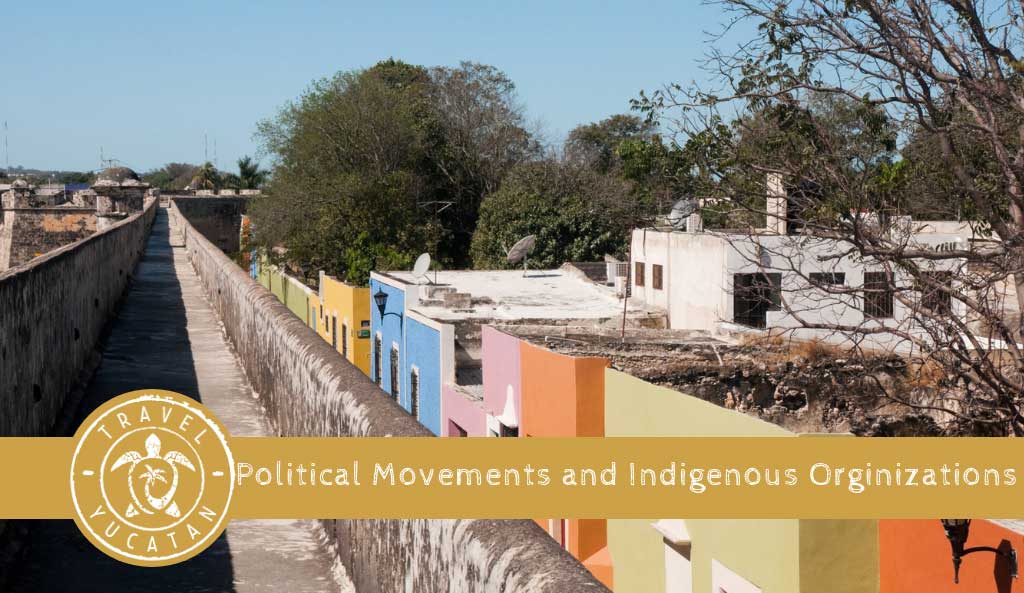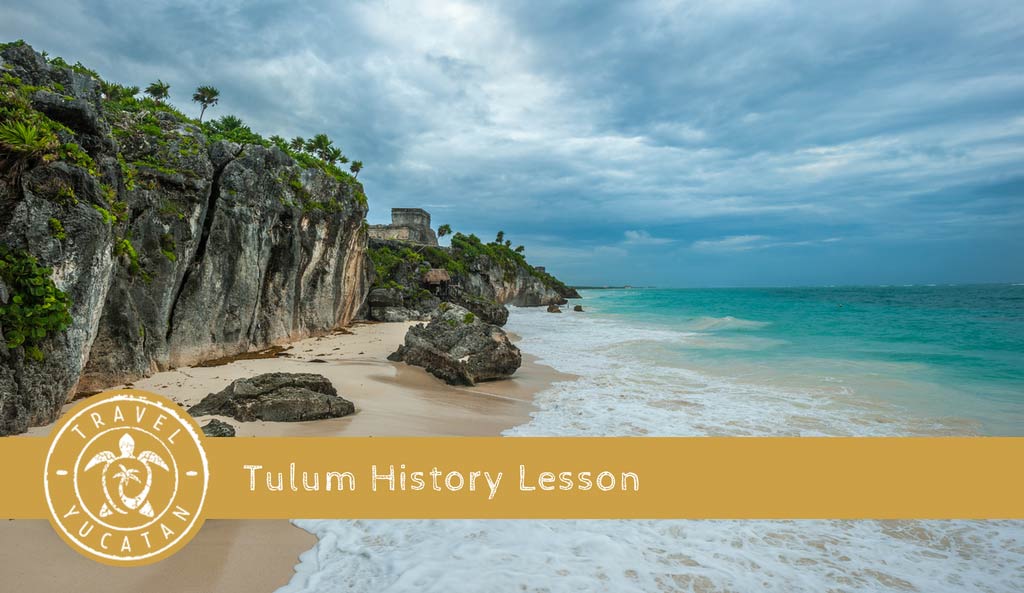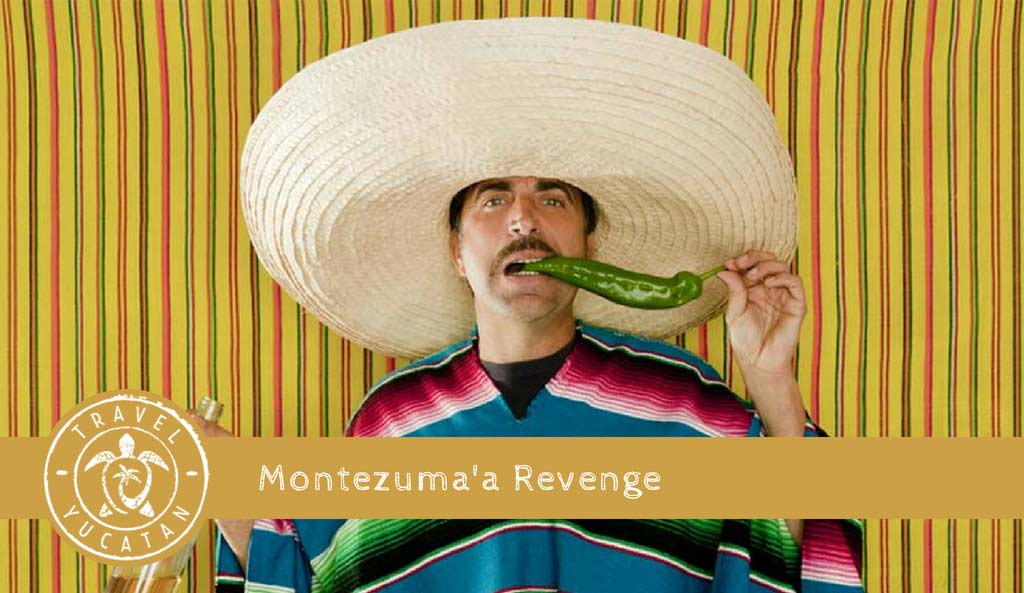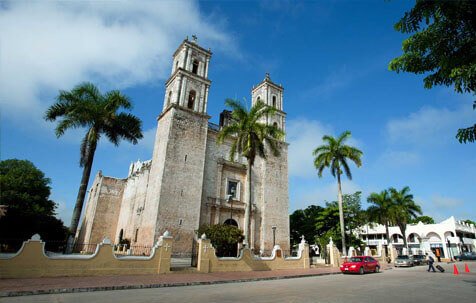Indigenous Organizations
1. During the three centuries of colonial rule there were many rebellions and armed movements by the indigenous populations in defense of their rights as peoples and against those that sought to oppress them. These continued after Independence in 1825 as a consequence of politics and policies that favored the concentration of lands in haciendas at the cost of the indigenous land holding during the colonial period. One result of these policies was the Mexican Revolution of 1910, started by the peasant and indigenous peoples claiming land and liberty after being subjugated and transformed into indentured servants of the large property-owners. The Agrarian Reform Law, established by the Constitution of 1917 subsequently provided land to an important segment of the peasant population.
2. At this time a series of political maneuvers were initiated to integrate and assimilate the indigenous people using people from the communities as change agents to integrate indigenous cultures into the dominant society. Contrary to expectations, some agents ended up becoming the mobilizing forces of their peoples to further land reform and instill greater respect for native cultures. Others assumed power and became the big men or caciques of their communities.
3. Since 1975 there has been a resurgence of indigenous movements. This is a new and unexpected phenomenon in the Mexican social and political arena because, until the 1970s, existing peasant organizations did not represent indigenous concerns. Starting in the decade of the seventies, however, these organizations raised new demands. In the beginning their claims were to land and the defense of their cultural values. These demands became greater and more diverse as a result of changing economic policies that stopped agrarian reform and land distribution as well as eliminating government institutions that formerly gave support and assistance to agricultural producers, to market pricing and subsidies. The economic crisis that these policies were intended to address and the transition period have caused a proliferation of new organizations with new demands:
- Defense of their natural resources, demanding the right to preserve and profit from their forests, pastures, sub soil resources, mines, rivers and lakes;
- Guarantees to develop agricultural and livestock production and eliminate intermediaries and usurers;
- Demands for bilingual education and intercultural education as well as measures to preserve their cultural patrimony;
- Demands for increased participation in the political processes at the level of state congresses as well as federal and participation in the design and execution of development projects;
- Demands for respect for human rights in the cases where the tensions between the state or federal level governments were high and resulted in massacres, murders, and takeovers of lands.
4. The scope of the indigenous movement over the last twenty years does not include all ethnic groups in the country, nor is it homogeneous since the causes giving rise to these organizations and the problem each confronts are not identical. The indigenous movement has many different expressions and encompasses different entities: ethnicities, ejidos, settlements, municipalities, productive organizations, and most recently, associations of indigenous people residing in urban areas to which they have migrated. In all these instances, however, the demands are for cultural rights, depending on the degree of ethnic and group consciousness, interests, and needs. Many of these productive organizations have taken as a key element the rescue of cultural traditions. This is reflected in the names of these organizations that are intimately related to their indigenous languages:
5. The indigenous movement exists at three different levels: (a) local, (b) regional, (c) national.
- The local level movements are characteristically based on the perceived needs and immediate problems of the groups, whether based on their ethnicity, community, settlement, or ejido. The mobilization of people at this level is limited and based on the discontent over the conditions of the people. Although the local level movements are limited in space and time they are the basis for the regional organizations, and experience gained in one local organization is carried over by its members into new organizations.
- The regional level is integrated into associations, coalitions of ethnic groups that aggregate communities, ejidos, and settlements. These organizations have a broader concept of their needs and demands and articulate more clearly their cultural interest.
- The national level movement began in 1975 with indigenous organizations that were initially promoted by the government institutions but that now exist to advocate for indigenous rights, such as the National Council of Indigenous Peoples (CNPI) and the National Association of Bilingual Teachers. Other organizations represented at the national level include:
Table 9.1 Indigenous Organizations
| National Indigenous Movement of the National Peasant Confederation |
Movimiento Nacional Indigena de la Confederacion Nacional Campesina |
MNI-CNC |
| National Confederation of Indigenous Peoples | Confederacion Nacional de Pueblos Indigenas | CONAIN |
| National Union of Autonomous Regional Peasant Organizations |
Union Nacional de Organizaciones Regionales Campesinas Autonomas |
UNORCA |
| Indigenous Peoples Independent Front | Frente Nacional de Pueblos Indigenas | FIPI |
| National Indigenous Council | Consejo Nacional Indigena | CNI |
6. At this time there are indigenous organizations at the national, state, regional and local level whose aim is to develop a variety of activities in order to defend their rights as peoples and to be included in the democratization process of the country. Additionally, a key point of their demands is to be participants in the development process so that their needs are included, their quality of life improved, and the extreme poverty in which they live is eliminated.
International Non-Governmental Organizations
7. There are many international agencies that have been interacting with indigenous peoples in Mexico. They have been instruments to promote dialogue and understanding in both the Latin American context as well as internationally. The
Instituto Interamericano Indigenista(III) has brought together indigenous intellectuals and professionals in a forum to exchange experiences and align positions with respect to certain issues for the past sixty years. In the same way, the Organización de Estados Americanos (OEA) has been instrumental in providing grants and scholarships to indigenous peoples of the continent. The United Nations through its various agencies such as UNESCO, ILO, IFAD, FAO, has formulated projects and provided for the exchange of experiences between governments and indigenous groups.
8. Of special significance among these organizations are the International Labor Organization�s initiative to adopt Resolution 107 later modified in the 1980s and converted to Resolution 169. This resolution has been ratified by the Mexican Government. International financial institutions such as the World Bank and the Inter American Development Bank (IDB) have provided assistance in the forms of loans and grants that include specific actions and programs for indigenous peoples. Assisted and encouraged by the IDB, the Indigenous Peoples Development fund was created in 1992. Mention should also be made of the special work done by the InterAmerican Development Foundation that has worked directly with indigenous organizations in different regions of Mexico.
9. Similarly, in Europe, the European Community has been a vehicle to seek cooperation among various indigenous groups in Mexico. The same can be said of countries such as Spain, Norway, Holland, France, Sweden, and Denmark. Out of these policies have emerged more than 100 NGOs or foundations focused on indigenous peoples and reaching nearly all indigenous regions in the country.
10. Among the North American and Canadian institutions that have engaged in advocacy for indigenous peoples are the World Wildlife Fund, the Ford Foundation Us Branch of International Union for the Conservation of Nature, MacArthur Foundation, Survival International, The House of Friends, as well as a great many universities of both countries conducting special studies about indigenous peoples.
National Non-Governmental Organizations
11. Some of the national foundations and NGOs have focused on indigenous populations and actively work with local level organizations and institutions. Their activities have focused on those states with the highest indigenous population, such as Chiapas and Oaxaca. Some of the most important of these are CONVERGENCIA,Fundación Mexicana de Desarrollo Rural, ANADEGES, Fundación Miguel Alemán, CEMEFI, CAMPO, Fundación VAMOS, Fundación DEMOS, COMPARTAMOS, etc.
12. All of them have special activities focusing on human rights, environmental protection, productive activities, health, etc. Their actions are highly significant because they occupy spaces and operate in the interstitial areas where formal government agencies cannot work or where the disappearance of government institutions has left a vacuum or deficit from budgetary downsizing. These organizations, in addition to including programs highly beneficial to the well being of indigenous communities, serve an additional and related role as observers and guarantors of human rights for indigenous peoples and advocates for their legitimate participation in the broader political processes of the country.
Indigenous Organizations and Enterprises
13. The indigenous organizations have created a variety of enterprises for productive activities, for cultural preservation, and for education. Their objective is the promotion of indigenous development from their own perspective to allow them to use their own human capital, technological knowledge, and their existing systems of political organization.
14. There is a strong focus among these organizations on the promotion of a development model that permits the retention of their own ethnic identity. Some of these organizations are independent of government, while others are funded by it. Those that have received external assistance show three common elements: (a) seed capital given by an agency fostering development; (b) technical assistance over a long period of time in order to ensure sustainability and success; and (c) models which incorporate local perceptions of what constitutes success and define objectives in local terms.
Forest Resources
The indigenous communities and ejidos with forest enterprises are an interesting example. Between 70 and 85 percent of the forested areas belong to 7,000 to 9,000 communities and ejidos. Historically and until 1970 the state gave concessions to national and international individuals and organizations for the exploitation of these resources while the ejidatarios and comuneros lived as workers in the extraction of timber. In 1970 some areas, such as the Purepecha in Michoacan, the Zapotec and some communities in Oaxaca, some ejidos in Yucatan, Chihuahua and Durango, started to control their forest resources through government-granted concessions. In most of these cases NGOs interested in environmental issues, sustainable forestry, and social issues provided sources of financial and technical assistance. Among these are the Ford Foundation, the Inter-American Foundation, and German Technical Assistance. In these instances the NGOs provide some seed capital but the greatest source of financing is the capital provided by the extractive industry. There are a number of indigenous communities and ejidos with forest resources that have developed important industries and organized their communities to promote efficient marketing as well as sustainable resource management, including re-forestation. These organizations are characterized by being based on local traditional principles and forms of organization and community participation.
15. The Union de Ejidos Forestales of the Maya Zone in Yucatan includes 18 ejidos and 2,791 ejidatarios. In Oaxaca, where 90 percent of the state has forests,
45 percent of these are in the hands of communities and ejidos that manage these resources commercially. They have formed 30 groups of unions with industrial capacity and formal management structures. The case of Nuevo San Juan in Michoacan is a particular example of a forest industry managed by comuneros who control the entire process of production from extraction through marketing. In Chiapas, some communities have begun the formation of similar organizations. The Tarahumaras and Tepehuas in the states of Chihuahua and Durango, also have forest enterprises although in these areas the environmental degradation is severe due to excessive logging in the past by private industry.
16. An interesting aspect of the indigenous enterprises compared with the non-indigenous, is the tendency to invest part of the profits into social infrastructure and social programs (pensions for workers, health provision programs). The government has recognized the great potential of these enterprises and has begun to promote them in other indigenous communities and regions, as well as to interest private industry to invest capital in these organizations. This is a long-term process, however, and requires a fundamental change in the structure of relations that has prevailed between communities and ejidos and private industry, in order to permit the communities to consolidate their independence and control the marketing of their products directly without the intervention of private industry in determining the objectives and investments.
Coffee Enterprises
17. There are coffee cooperatives in Chiapas and Oaxaca that have managed the markets, credit, storage, and processing of coffee over the last fifteen years. Some examples of these organizations are the State Coordinator of Coffee Producers (CEPCO) founded in 1989. This process has indirectly assisted to strengthen other organizations such as UCIZONI and UCIRI (Zapotec and Mixtec in the Isthmus of Tehuantepec) and UCI (Southern Zapotec).
18. These cooperatives have been successful in marketing for the European market, capitalizing on the defense of their ethnic identity. They obtain some financing from NGOs and recently also from PROCAMPO and the Alianza para el Campo. The problems they face are the fluctuation of the prices in the international market and the acceptance of the higher value of the organically produced coffee that, in the case of Chiapas, constitutes an important high volume crop.
19. Another successful enterprise is the Union de Ejidos de la Selva, with participation of 57 Tojolabal and Tzotzil communities and 1,304 households in the Municipality of Las Margaritas close to the Biosphere of Montes Azules. The Chiapas Profile documents another important enterprise, the ISMAM, created in 1988 and controlled by the Mam in the Motozintla Sierra. They produce organic coffee and ISMAM also is an advocate for indigenous rights. They have founded their own agro-ecological school with the objective that their children recuperate their indigenous language and traditional artisan practices.
20. These development experiences, stimulated by the indigenous people themselves, suggest that the rural population is searching for alternative models of development, based on specific local and regional conditions. They are also a reaction to the agricultural and institutional reforms that have impacted production and marketing, rural credit, and the elimination of subsidies for agricultural production.
21. The consequences of these changes have differentially impacted agricultural production, but the negative impact on indigenous communities is undeniable, yet they are the ones generating the alternative models of development based on cultural and organizational roots. The elimination of poverty for these peoples has to include respect and strengthening traditional organization and identity among the indigenous peoples.
Table 9.3 Main Indigenous Organizations in Mexico
| ACR | Alianza Campesina Revolucionaria. |
| AMPII | Asociación Mexicana de Profesionistas e Intelectuales Indígenas. |
| ANPIBAC | Alianza Nacional de Profesionistas Indígenas Bilingües, Asociación Civil. |
| BCCH | Bloque Campesino Chiapaneco. |
| CAM | Consejo Agrarista Mexicano. |
| CCH | Comité Coordinador Huasteco. |
| CCRI | Coordinadora Campesina Revolucionaria Independiente. |
| CDP | Comité de Defensa Popular. |
| CECVYYM | Coalición de Ejidos Colectivos del Valle del Yaqui y Mayo. |
| CIOAC | Central Independiente de Obreros Agrícolas y Campesinos. |
| CMPI | Consejo Mundial de Pueblos Indígenas. |
| CNC | Confederación Nacional Campesina. |
| CNJI | Confederación Nacional de Jóvenes Indígenas. |
| CNJYCI | Confederación Nacional de Jóvenes y Comunidades Indígenas. |
| CNOP | Confederación Nacional de Organizaciones Populares. |
| CNPA | Coordinadora Nacional Plan de Ayala. |
| CNPI | (el) Consejo Nacional de Pueblos Indígenas. |
| CNPI | (la) Coordinadora Nacional de Pueblos Indígenas. |
| COCEI | Coalición Obrero, Campesina, Estudiantil del Istmo. |
| Cocos | Comité Coordinador de Solicitantes. |
| Codeco | Comité Organizador y de Consulta para la Unión de los Pueblos de la Sierra Norte de Oaxaca. |
| Codremi | Comité de Defensa de los Recursos Naturales y Humanos Mixes. |
| COMA | Comuneros Organizados de Milpa Alta. |
| Conacar | Consejo Nacional Cardenista. |
| Copider | Comité Promotor de Investigación para el Desarrollo Rural. |
| Corpi | Coordinadora Regional de Pueblos Indígenas. |
| CSRT | Consejo Supremo de la Raza Tarahumara. |
| FCI | Frente Campesino Independiente |
| FICIM | Federación Independiente de Comunidades Indígenas Mayos. |
| FNDSCAG | Frente Nacional por la Defensa del Salario, Contra la Austeridad y la Carestía. |
| FNDP | Frente Nacional Democrático Popular. |
| FOCED | Frente Obrero Campesino Estudiantil de Durango. |
| EPZ | Frente Popular de Zacatecas. |
| FRISFP | Frente Revolucionario Indígena de San Felipe del Progreso. |
| MLR | Movimiento de Lucha Revolucionaria. |
| MNI | Movimiento Nacional Indígena. |
| MNPA | Movimiento Nacional Plan de Ayala. |
| MRM | Movimiento Revolucionario del Magisterio. |
| MULT | Movimiento de Unificación y Lucha Triqui. |
| OACI-13 | Organización de Acción Campesina Independiente 13 de Octubre. |
| OCEZ | Organización Campesina Emiliano Zapata. |
| OCIHV | Organización Campesina Independiente de la Huasteca Veracruzana. |
| Odrenasij | Organización de Defensa de los Recursos Naturales y Desarrollo Social de la Sierra Juárez, A. C. |
| Odeco | Organización y Desarrollo de la Comunidad. |
| OIIS | Organizaciones Indígenas Independientes. |
| ONIC | Organización Nacional Indígena de Colombia. |
| OPISEM | Organización de Pueblos Indígenas del Sureste de México. |
| OIPUH | Organización Independiente de Pueblos Unidos de las Huastecas. |
| OPA | Organización de Pueblos del Altiplano. |
| OPINAC | Organización de Profesionistas Indígenas Nahuas, A. C. |
| ORCO | Organización Regional de la Costa de Occidente. |
| OCZMB | Organización Campesina Zapatista |
| PRI | Partido Revolucionario Institucional. |
| PRT | Partido Revolucionario de los Trabajadores. |
| PRD | Partido de la Revolución Democrática. |
| SURI | Sociedad Unificadora de la Raza Indígena. |
| UCEZ | Unión de Comuneros Emiliano Zapata. |
| UCI | Unión Campesina Independiente. |
| UEIS | Unión de Ejidos Lázaro Cárdenas. |
| UGOCM | Unión General de Obreros y Campesinos de México. |
| UNOI | Unión Nacional de Organizaciones Indígenas. |
| UPM | Unión de Pueblos de Morelos. |
Instituto de Ecologica, UNAM







